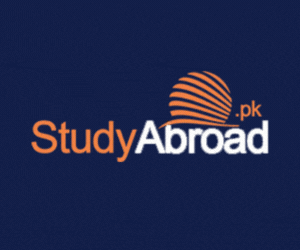-
 Home
Home
-
 News
News
Latest Educational News Stories
Daily update of all national, international news, picture stories, college / university announcements and educational events.
-
 Colleges
Colleges
Pakistan's Largest Database of Colleges and Universities
Explore Largest Directory of Private and Govt. Colleges, Universities and find best institute for your future Education.
-
 Courses
Courses
-
 Admission
Admission
-
 Lectures
Lectures
-
 Online Test
Online Test
Short Question
- 9th Class Physics Short Questions
- 9th Class Chemistry Short Questions
- 9th Class Math Short Questions
- 9th Class Biology Short Questions
- 9th Class Computer Short Questions
- 9th Class English Short Questions
- 10th Class Physics Short Question
- 10th Class Chemistry Short Question
- 10th Class Math Short Question
- 10th Class Biology Short Question
- 10th Class Computer Short Question
- 10th Class English Short Question
-
 Past Papers
Past Papers
-
 Date Sheets
Date Sheets
-
 Results
Results
Exam Results 2024
Check online Results 2024 Matric Inter BA BSc B.Com MA MSc M.Com CSS PCS MCAT ECAT of all educational boards and universities in Pakistan
-
 Study Abroad
Study Abroad
Study Abroad Programs and Opportunities for Pakistani Students
Explore free study abroad search to find programs, consultants, events to study in USA, UK, Australia, China, Malaysia and many others.
-
 Jobs
Jobs
-
 Tutors
Tutors
-
 More
More
-
 Apps
Apps
Chapter 3 of FSc part 1 chemistry deals with the states of matter. This is very important chapter of 11th class chemistry. In this chapter, we study the gases and their properties. The concepts of this chapter are very important. For the students of FSc part 1, 11thclass chemistry chapter 3 MCQs with answers is available here. These MCQs tests are available online for the students for free. The students of 11th class can easily attempt these online MCQs tests. These tests are very helpful in the preparation of chemistry chapter 3. Now, the students can make better practice in easy way of this important chapter online.
MCQ's Test For Chapter 3 "Chemical Bonding "
Try The MCQ's Test For Chapter 3 "Chemical Bonding "
-
Total Questions17
-
Time Allowed20
Highest bond order is found in
Tendency of an atom to attract the shared pair of electrons is called.
Which of the following species contains a dative bond.
The most electronegative atom is
The bond angle in ethene molecule is.
Octet rule is not obeyed b which of the following compounds during its formation
The molecule with linear structure is
Which type of hybridization of C occurs in CO2
Which one is a non polar molecule.
Thnumebr of lone pair of electonrsein ammonium ion is
Which will have zero dipole moment
The actual bond length in a polar covalent compund is.
Which of the following will show paramagnetic property.
What is the type of [ICL4] according to the VSEPR model.
The shape of ICl5 according to the VSEPR model is
Covalent bonds are
An ionic compound A+B is most likely to be formed when
MCQs Test of Chapter 3 of 11th Chemistry
After practice of these online MCQs tests of chapter 3, the students will be able to understand the concepts of gases and can score good marks in board examination of chemistry. You can download 11th class chemistry chapter 3 MCQs in pdf for preparation of this important chapter. There are four options for each MCQ from which the students have to select the correct one. After attempting the complete test, the result is shown on the screen. The correct answers of all questions are highlighted so that the students can check the correct answers. For perfect preparation, check online MCQs test of chemistry chapter 3 for 11th class on our website ilmkidunya. These online MCQs tests give the students more confidence for the best performance in the chemistry board exam. After practice these online MCQs tests, you will find this chapter 3 of 11th class chemistry more easy and interesting and can score good marks in the board exam.
Top Scorers Of Chapter 3 "Chemical Bonding " MCQ`s Test
-
K Kishwer 23 - Aug - 2025 00 Min 52 Sec 17/17 -
F Faizan Mengal 12 - Sep - 2025 02 Min 51 Sec 16/17 -
E Era Rea 20 - Jan - 2025 03 Min 49 Sec 16/17 -
F Farukh Sohail 04 - Jan - 2025 05 Min 05 Sec 16/17 -
A Arbab Waris 17 - Nov - 2025 00 Min 40 Sec 15/17 -
R Raja Mukhtar 19 - Jan - 2025 02 Min 16 Sec 15/17 -
T Tabinda Hayyat 05 - Jan - 2025 02 Min 38 Sec 15/17 -
Z Zaina Abid 26 - Dec - 2024 05 Min 38 Sec 15/17 -
M Manal Babar 03 - Oct - 2025 25 Min 14 Sec 15/17 -
R Rai Shahid 23 - Aug - 2025 25 Min 31 Sec 15/17 -
D Daniyal 08 - Jan - 2025 00 Min 49 Sec 14/17 -
A Abdul Sami 04 - Jan - 2025 04 Min 06 Sec 14/17 -
I Izzah zahur 08 - Jan - 2025 03 Min 59 Sec 13/17 -
M Malik Ejaz 09 - Jan - 2025 03 Min 21 Sec 12/17 -
M Maheen Abid 08 - Jan - 2025 03 Min 37 Sec 12/17
FSc Part 1 Chemistry (New Book) Chapter 3 Important MCQ's
| Sr.# | Question | Answer |
|---|---|---|
| 1 |
Which theory explain the paramagnetic behavior exhibited by O2 molecule. |
A.
Band Theory
B.
VBT
C.
MOT
D.
VSEPR Theory |
| 2 |
Which of the following species has unparied electonrs in antibonding molecular orbitals. |
A.
O2 2+
B.
N 2 2-
C.
B
D.
F2 |
| 3 |
Which type of hybridization of C occurs in CO2 |
A.
SP
B.
sp2
C.
sp3
D.
dsp2 |
| 4 |
The molecuel with greatest dipole moment is. |
A.
H2O
B.
H2S
C.
NH3
D.
HF |
| 5 |
Which of the following elements has incopleteoctel after making the bond. |
A.
Be in BeCl2
B.
O in H2O
C.
C in CH4
D.
N in NH3 |
| 6 |
Which of the following hybridizations is found in ethyne. |
A.
Sp
B.
sp2
C.
sp3
D.
No hybridization |
| 7 |
The shape of ICl5 according to the VSEPR model is |
A.
T shape
B.
Tetrahedral
C.
Trigonal panar
D.
Trigonal bipyramidal |
| 8 |
Which will have zero dipole moment |
A.
H2O
B.
BF3
C.
H2S
D.
CHCl3 |
| 9 |
Sp3 Hybridiztion ins associated wiht structure. |
A.
Linear
B.
Tretrahedral
C.
Trigonal
D.
Octahedra |
| 10 |
Which of the followng molecules has zero dipole moment. |
A.
BF3
B.
NH3
C.
H2O
D.
CHCl3 |














